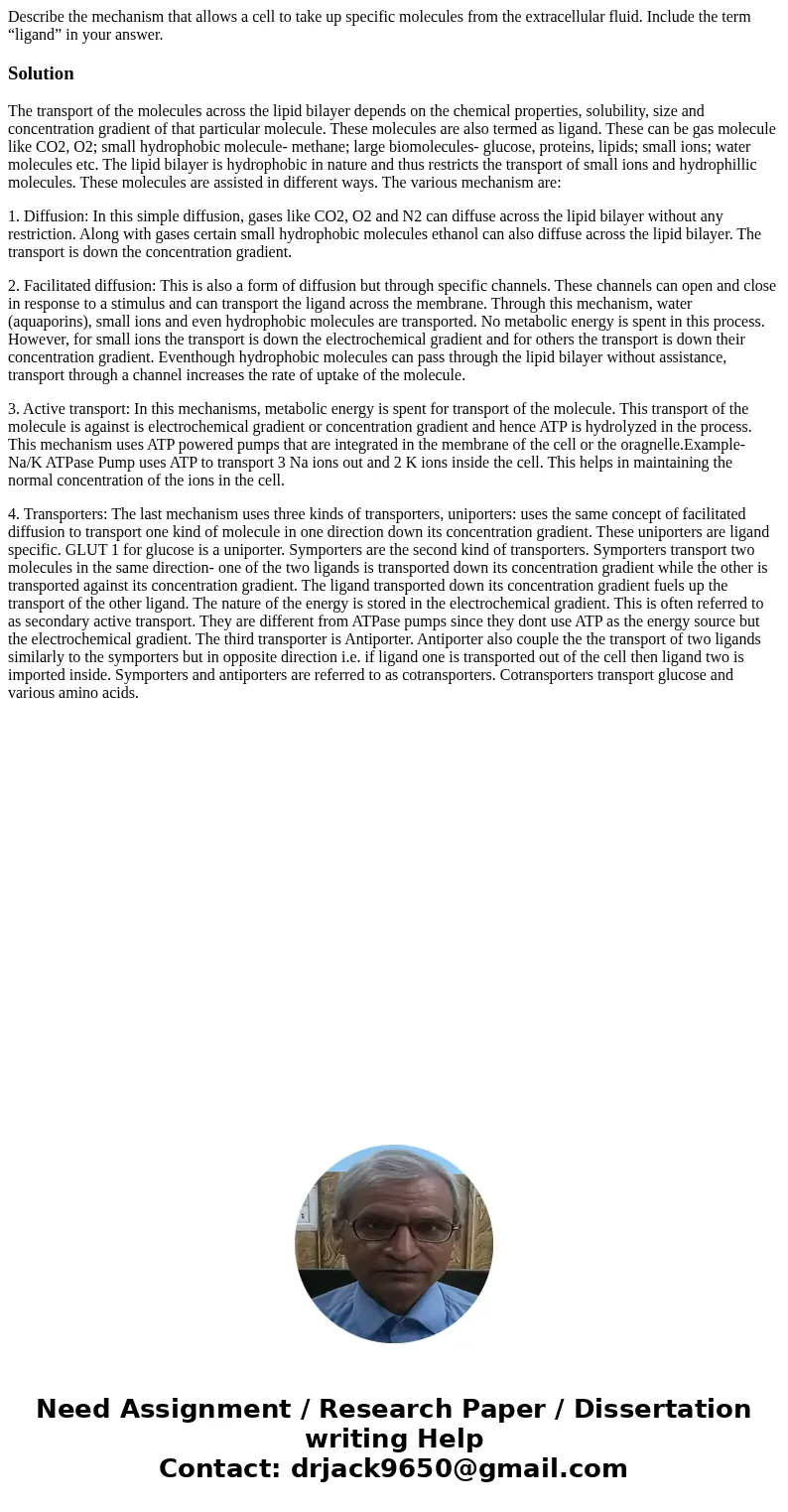Describe the mechanism that allows a cell to take up specifi
Describe the mechanism that allows a cell to take up specific molecules from the extracellular fluid. Include the term “ligand” in your answer.
Solution
The transport of the molecules across the lipid bilayer depends on the chemical properties, solubility, size and concentration gradient of that particular molecule. These molecules are also termed as ligand. These can be gas molecule like CO2, O2; small hydrophobic molecule- methane; large biomolecules- glucose, proteins, lipids; small ions; water molecules etc. The lipid bilayer is hydrophobic in nature and thus restricts the transport of small ions and hydrophillic molecules. These molecules are assisted in different ways. The various mechanism are:
1. Diffusion: In this simple diffusion, gases like CO2, O2 and N2 can diffuse across the lipid bilayer without any restriction. Along with gases certain small hydrophobic molecules ethanol can also diffuse across the lipid bilayer. The transport is down the concentration gradient.
2. Facilitated diffusion: This is also a form of diffusion but through specific channels. These channels can open and close in response to a stimulus and can transport the ligand across the membrane. Through this mechanism, water (aquaporins), small ions and even hydrophobic molecules are transported. No metabolic energy is spent in this process. However, for small ions the transport is down the electrochemical gradient and for others the transport is down their concentration gradient. Eventhough hydrophobic molecules can pass through the lipid bilayer without assistance, transport through a channel increases the rate of uptake of the molecule.
3. Active transport: In this mechanisms, metabolic energy is spent for transport of the molecule. This transport of the molecule is against is electrochemical gradient or concentration gradient and hence ATP is hydrolyzed in the process. This mechanism uses ATP powered pumps that are integrated in the membrane of the cell or the oragnelle.Example- Na/K ATPase Pump uses ATP to transport 3 Na ions out and 2 K ions inside the cell. This helps in maintaining the normal concentration of the ions in the cell.
4. Transporters: The last mechanism uses three kinds of transporters, uniporters: uses the same concept of facilitated diffusion to transport one kind of molecule in one direction down its concentration gradient. These uniporters are ligand specific. GLUT 1 for glucose is a uniporter. Symporters are the second kind of transporters. Symporters transport two molecules in the same direction- one of the two ligands is transported down its concentration gradient while the other is transported against its concentration gradient. The ligand transported down its concentration gradient fuels up the transport of the other ligand. The nature of the energy is stored in the electrochemical gradient. This is often referred to as secondary active transport. They are different from ATPase pumps since they dont use ATP as the energy source but the electrochemical gradient. The third transporter is Antiporter. Antiporter also couple the the transport of two ligands similarly to the symporters but in opposite direction i.e. if ligand one is transported out of the cell then ligand two is imported inside. Symporters and antiporters are referred to as cotransporters. Cotransporters transport glucose and various amino acids.

 Homework Sourse
Homework Sourse